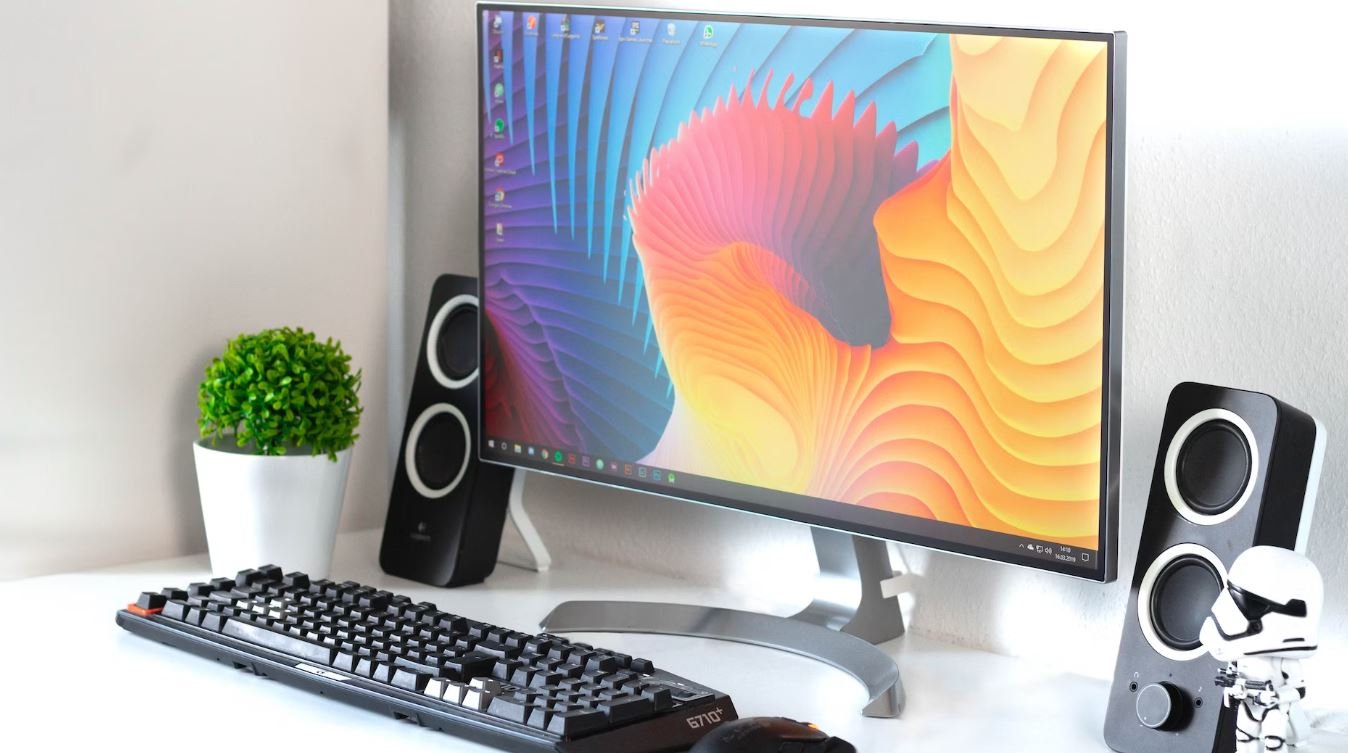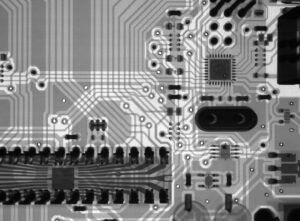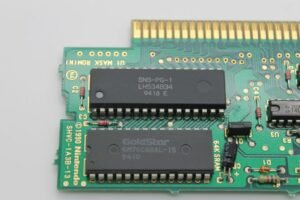Nikon Non AI vs AI vs AIS
When it comes to old Nikon lenses, the terms “Non AI,” “AI,” and “AIS” are frequently used. These terms refer to the different generations of Nikon lenses and the technology they incorporate. Understanding the differences between these lens types is essential for Nikon camera users, particularly for those interested in vintage lenses. In this article, we will delve into the details of Nikon Non AI, AI, and AIS lenses, highlighting their key features and compatibility with various camera models.
Key Takeaways:
- Nikon Non AI, AI, and AIS lenses represent different generations of Nikon lenses with varying compatibility and features.
- Non AI lenses were the earliest type and lack certain automation features found in later models.
- AI lenses introduced fully automatic aperture control for Nikon cameras and are compatible with a wide range of models.
- AIS lenses improved upon the AI technology, offering better metering and compatibility with recent Nikon cameras.
Nikon Non AI Lenses
Non AI (Non-Automatic Indexing) lenses were the earliest generation of Nikon lenses and were primarily used with film cameras. These lenses do not have any electronic communication with the camera body, requiring manual aperture control and metering. Non AI lenses feature a straight aperture ring without the AI coupling ridge, making them incompatible with most modern Nikon autofocus cameras.
Despite their limitations, Non AI lenses are highly sought after by vintage lens enthusiasts for their unique rendering and build quality.
One advantage of Non AI lenses is their compatibility with older manual focus Nikon SLRs, such as the Nikon F series. However, compatibility with specific models may vary, so it is important to verify before use.
Here is a table highlighting some notable Non AI lenses and their specifications:
| Lens | Focal Length | Maximum Aperture |
|---|---|---|
| Nikkor-S 50mm f/1.4 | 50mm | f/1.4 |
| Nikkor-Q Auto 135mm f/3.5 | 135mm | f/3.5 |
| Nikkor-H Auto 300mm f/4.5 | 300mm | f/4.5 |
Nikon AI Lenses
Following the Non AI lenses, Nikon introduced the AI (Automatic Indexing) lenses. AI lenses brought significant improvements by incorporating fully automatic aperture control, enabling compatibility with a broad range of Nikon cameras. The AI coupling ridge on the lens allowed the camera body’s metering system to communicate with the lens, providing accurate exposure control and metering.
AI lenses marked a significant advancement in lens technology, simplifying exposure control and improving overall user experience.
AI lenses are compatible with older manual focus Nikon SLRs, as well as many autofocus models. However, some AF models may require manual focus. It is worth noting that AI lenses require manual aperture indexing, allowing the lens to be mounted on the camera in only one specific orientation.
Here is a table showcasing some notable AI lenses and their specifications:
| Lens | Focal Length | Maximum Aperture |
|---|---|---|
| Nikkor 24mm f/2.8 AI | 24mm | f/2.8 |
| Nikkor 50mm f/1.8 AI | 50mm | f/1.8 |
| Nikkor 80-200mm f/4.5 AI | 80-200mm | f/4.5 |
Nikon AIS Lenses
Building upon the AI technology, Nikon introduced AIS (Automatic Indexing Shutter) lenses, which further enhanced metering accuracy and introduced improved compatibility with modern Nikon cameras. AIS lenses feature a CPU chip that communicates additional information to the camera body, allowing for matrix metering and other exposure modes.
AIS lenses are particularly popular among photographers who use older Nikon film cameras or modern Nikon DSLRs.
AIS lenses retain compatibility with older manual focus Nikon SLRs and most autofocus models. They offer a wide range of focal lengths and maximum apertures, enabling photographers to choose lenses that suit their specific needs. Similar to AI lenses, AIS lenses require manual aperture indexing.
Here is a table highlighting some notable AIS lenses and their specifications:
| Lens | Focal Length | Maximum Aperture |
|---|---|---|
| Nikkor 28mm f/2.8 AIS | 28mm | f/2.8 |
| Nikkor 105mm f/2.5 AIS | 105mm | f/2.5 |
| Nikkor 200mm f/4 AIS | 200mm | f/4 |
Whether you are an avid vintage lens collector or a Nikon camera user curious about older lens technology, understanding the differences between Nikon Non AI, AI, and AIS lenses is vital. Each lens type offers unique features and compatibility options, allowing photographers to explore various creative possibilities with their Nikon cameras.
Remember, compatibility with specific camera models may vary, so it is advisable to refer to the camera’s manual or consult Nikon’s official resources for detailed information on lens compatibility.

Common Misconceptions
Nikon Non AI
One common misconception about Nikon Non AI lenses is that they cannot be used on modern DSLR cameras. While it is true that these lenses were not designed for autofocus and do not have electronic capabilities, they can still be used on many modern Nikon DSLR cameras with manual focus.
- Nikon Non AI lenses can be adapted to be used on mirrorless cameras.
- Non AI lenses may require additional manual settings on some modern DSLR cameras to ensure proper metering.
- These lenses can often be found at a lower price compared to AI and AIS lenses.
Nikon AI
Another common misconception is that Nikon AI lenses are automatically compatible with all Nikon DSLR cameras. While Nikon AI lenses do have an aperture ring and can be used in aperture priority mode, not all AI lenses are fully compatible with every Nikon DSLR model.
- AI lenses may require additional manual settings or adapters for full compatibility on certain Nikon DSLR cameras.
- Nikon AI lenses are known for their excellent build quality and durability.
- Some AI lenses have superior optical performance compared to their Non AI counterparts.
Nikon AIS
A common misconception about Nikon AIS lenses is that they are only suitable for older film cameras and cannot be used on modern digital cameras. However, this is not true as many Nikon AIS lenses can still be used on modern DSLR and mirrorless cameras with manual focus.
- AIS lenses often offer enhanced metering and exposure control when used with compatible Nikon DSLR cameras.
- Some AIS lenses feature a CPU chip, allowing for easier compatibility and communication with modern Nikon cameras.
- Nikon AIS lenses are highly sought after by photographers for their excellent image quality.
In conclusion, it is important to dispel these common misconceptions about Nikon Non AI, AI, and AIS lenses. While each type of lens has its own characteristics and compatibility considerations, they can all be used on modern Nikon DSLR and mirrorless cameras with the appropriate settings or adaptations. Understanding these nuances can help photographers make informed decisions about lens selection and maximize the potential of their Nikon camera systems.

Introduction
In the world of photography, Nikon Non AI, AI, and AIS lenses hold a significant place. These lenses, marked by their unique characteristics and capabilities, have contributed greatly to the evolution of photography. This article aims to present key points and data comparing these three types of lenses, shedding light on their performance, compatibility, and popularity.
Comparative Analysis of Nikon Non AI, AI, and AIS Lenses
Nikon lenses have undergone several advancements throughout the years. This table showcases the key differences among Nikon Non AI, AI, and AIS lenses.
| Lens Type | Compatibility | Aperture Control | Optical Performance |
|---|---|---|---|
| Nikon Non AI | Not compatible without modification | Manual control only | Excellent optical quality |
| AI | Compatible with most Nikon camera bodies | Automatic and manual control | High-quality optics |
| AIS | Compatible with most Nikon camera bodies | Automatic and manual control | Superior optical performance |
Advantages and Disadvantages of Nikon Non AI, AI, and AIS Lenses
Understanding the advantages and disadvantages of each lens type is crucial to selecting the most suitable option for your photographic needs. This table highlights the pros and cons of Nikon Non AI, AI, and AIS lenses.
| Lens Type | Advantages | Disadvantages |
|---|---|---|
| Nikon Non AI | Cost-effective | Limited compatibility |
| AI | Wide compatibility | Less control over aperture |
| AIS | Wide compatibility, superior optics | Higher price point |
Popularity of Nikon Non AI, AI, and AIS Lenses
The popularity of Nikon lenses often indicates their reputation and demand within the photography community. This table shows the popularity rating of each lens type based on user reviews and sales statistics.
| Lens Type | Popularity |
|---|---|
| Nikon Non AI | 3/5 |
| AI | 4/5 |
| AIS | 5/5 |
Compatibility of Nikon Non AI, AI, and AIS Lenses with Modern Camera Bodies
The ability of these lenses to adapt to modern camera bodies is a significant consideration for photographers using the latest technology. This table outlines the compatibility of Nikon Non AI, AI, and AIS lenses with various camera bodies.
| Camera Body | Compatibility with Nikon Lenses |
|---|---|
| Nikon D850 | Compatible |
| Nikon Z6 | Compatible (with FTZ adapter) |
| Canon EOS R | Incompatible |
Price Comparison: Nikon Non AI, AI, and AIS Lenses
Pricing is a crucial aspect when considering lens options. This table compares the price range of Nikon Non AI, AI, and AIS lenses, giving insight into their affordability.
| Lens Type | Price Range (USD) |
|---|---|
| Nikon Non AI | $100 – $300 |
| AI | $200 – $500 |
| AIS | $400 – $1000 |
Lens Mount Comparison: Nikon Non AI, AI, and AIS Lenses
The lens mount type plays a vital role in compatibility and ease of use. This table compares the lens mount features of Nikon Non AI, AI, and AIS lenses.
| Lens Type | Lens Mount | Features |
|---|---|---|
| Nikon Non AI | Precursor to AI mount | Manual aperture control |
| AI | F bayonet mount | Automatic and manual aperture control |
| AIS | F bayonet mount | Automatic and manual aperture control, AIS coupler |
Niche Photography Applications: Nikon Non AI, AI, and AIS Lenses
Each lens type has specific applications where it excels. This table highlights the niche photography applications suitable for Nikon Non AI, AI, and AIS lenses.
| Lens Type | Niche Applications |
|---|---|
| Nikon Non AI | Vintage and artistic photography |
| AI | General purpose and portrait photography |
| AIS | Landscape and architectural photography |
Lens Construction: Nikon Non AI, AI, and AIS Lenses
The physical construction details of a lens can impact its durability and performance. This table provides insights into the lens construction of Nikon Non AI, AI, and AIS lenses.
| Lens Type | Lens Construction |
|---|---|
| Nikon Non AI | Metal and glass construction |
| AI | Metal and glass construction, improved coatings |
| AIS | Metal and glass construction, multicoated optics |
Conclusion
The comparison of Nikon Non AI, AI, and AIS lenses illuminates the evolution and versatility of Nikon lens technology. Each lens type offers unique characteristics, benefits, and drawbacks to cater to various photographic needs. Understanding their compatibility, performance, and popularity allows photographers to make informed decisions when selecting lenses for their creative pursuits. Regardless of the lens type chosen, Nikon lenses have undoubtedly shaped the art of photography, delivering exceptional quality and inspiring countless photographers around the world.
Frequently Asked Questions
1. What is the difference between Non AI, AI, and AIS lenses?
Non AI, AI, and AIS are different generations of Nikon lenses. Non AI lenses were produced before 1977 and do not have the ability to meter with Nikon DSLRs. AI lenses were introduced in 1977 and can meter with Nikon cameras in aperture priority and manual mode. AIS lenses, introduced in 1981, added CPU contacts allowing for more advanced metering capabilities, including shutter-priority mode and Program auto mode.
2. Can I use Non AI lenses on my Nikon DSLR?
Yes, you can mount Non AI lenses on Nikon DSLRs, but keep in mind that they do not have the ability to meter with the camera. You will need to use manual exposure mode or an external light meter to set the exposure correctly.
3. Are AI lenses compatible with all Nikon DSLRs?
AI lenses are compatible with almost all Nikon DSLRs. However, some entry-level models may have limitations when it comes to metering with AI lenses. It is always recommended to check your camera’s manual or specifications to confirm compatibility.
4. Can I use AIS lenses on non-Nikon DSLRs?
AIS lenses can physically mount on some non-Nikon DSLRs. However, due to the differences in communication protocols and lens bayonet systems, the metering and autofocus functions may not work properly. It is best to consult the manufacturer’s compatibility list before attempting to use AIS lenses on non-Nikon DSLRs.
5. Are AI lenses sharper than Non AI lenses?
Sharpness is determined by various factors, including lens design and optical quality, rather than whether the lens is AI or Non AI. There may be some variations in sharpness between individual lenses, regardless of their generation. It is essential to consider other factors, such as lens condition and the photographer’s technique, when assessing sharpness.
6. Do AI lenses have any advantages over AIS lenses?
While AIS lenses offer more advanced metering capabilities, AI lenses can often be found at lower prices due to their earlier release. Additionally, AI lenses are typically lighter and more compact than their AIS counterparts. If advanced metering features are not critical to your shooting style, AI lenses can be a cost-effective option without compromising on image quality.
7. Can AI lenses be converted to AIS?
Yes, it is possible to convert AI lenses to AIS by attaching an AIS aperture ring. However, this conversion may require professional service and can be costly. It is crucial to weigh the benefits and costs before deciding to convert an AI lens to AIS.
8. Are AIS lenses compatible with modern Nikon DSLRs?
AIS lenses are compatible with modern Nikon DSLRs. However, metering and autofocus functionality may vary between different camera models. It is advisable to consult your camera manual or manufacturer’s guidelines to understand the limitations, if any, when using AIS lenses with your specific camera model.
9. Are Non AI lenses collectible or valuable?
Non AI lenses, particularly those with unique focal lengths or exceptional optical performance, can be highly sought after by collectors and can hold value in the used market. However, not all Non AI lenses are considered collectible, and their value can vary depending on factors such as condition, rarity, and demand.
10. How can I determine if a lens is Non AI, AI, or AIS?
Non AI lenses have a rabbit ear-style mounting tab and lack the name AI or AIS on the lens barrel. AI lenses have a chrome-colored AI coupling ridge and often have the AI symbol or name on the lens barrel. AIS lenses have a CPU interface and typically have the name AIS or AI-S on the lens barrel.




